Know about the India's 17 National Symbols that reflect its rich culture, history, and values. Learn about their significance and role in fostering unity and national pride.

National Symbols of India: Our country’s pride and history are showcased through special symbols. India has 17 national symbols that reflect our rich culture and traditions, which we, as Indians, proudly share worldwide. These symbols are crucial because they hold national significance and should be known by all citizens. If you’re preparing for exams like Banking, SSC, IAS, or any other Govt exams, you may encounter questions about these symbols. In this article, we will explore the importance of India’s 17 national symbols.
National symbols are like iconic snapshots of a country’s identity, culture, history, and values. They play a big role in uniting people, fostering patriotism, and instilling a sense of national pride. These symbols often have strong emotional and cultural connections and can take the form of emblems, flags, anthems, and even animals.
India’s National Symbols have been thoughtfully chosen to represent the country in the best possible way. For instance, our national flower, the lotus, signifies spirituality and purity of heart and mind. The tiger, our national animal, symbolizes power, bravery, and courage. The Peacock, India’s National Bird, was chosen for its royal grace and stunning natural beauty, while the Banyan tree earned the title of National Tree because of its enduring qualities.
The National Symbols of India are the National identity elements of the country serving as visual and symbolic representations. These National Symbols of India signify the heritage and identity of the Republic of India.
The National Symbols serve as powerful emblems, representing the essence of the nation’s identity and heritage. The tricolor National Flag embodies courage, purity, and growth, while the State Emblem displays the Lion Capital of Ashoka, symbolizing strength and truth. The national anthem, “Jana Gana Mana,” and the national song, “Vande Mataram,” evoke patriotism and unity in diversity.
The majestic Peacock is India’s national bird, and the regal Bengal Tiger stands as the national animal of India, both highlighting the country’s biodiversity. The Ganges, revered as the national river, holds spiritual significance. The lotus, Banyan tree and Mango represent purity, wisdom, and prosperity as the national flower, tree, and fruit, respectively. These symbols inspire a sense of pride and love for the nation among Indians.
India has many National Symbols that are special and important to the country. These symbols include the national flag, national emblem, national song, national bird, national animal, national tree, national fruit, national flower, national anthem, national game, national calendar, national vegetable, national aquatic animal, national heritage animal, national river, and national currency. Each of these symbols has its own significance and represents a part of India’s identity and culture. So, if you are wondering what are the 17 national symbols of India, check out the complete National Symbols of India list below:
| National Symbols of India | ||
|---|---|---|
| S. No. | Title | National Symbols |
| 1 | National Flag | Tiranga |
| 2 | National Anthem | Jana Gana Mana |
| 3 | National Calendar | Saka calendar |
| 4 | National Song | Vande Mataram |
| 5 | National Emblem | National Emblem of India |
| 6 | National Fruit | Mango |
| 7 | National River | Ganga |
| 8 | National Animal | Royal Bengal Tiger |
| 9 | National Tree | Indian Banyan |
| 10 | National Aquatic Animal | Ganges River Dolphin |
| 11 | National Bird | Indian Peacock |
| 12 | National Currency | Indian Rupee |
| 13 | National Reptile | King Cobra |
| 14 | National Heritage Animal | Indian Elephant |
| 15 | National Flower | Lotus |
| 16 | National Vegetable | Pumpkin |
| 17 | Oath of Allegiance | National Pledge |
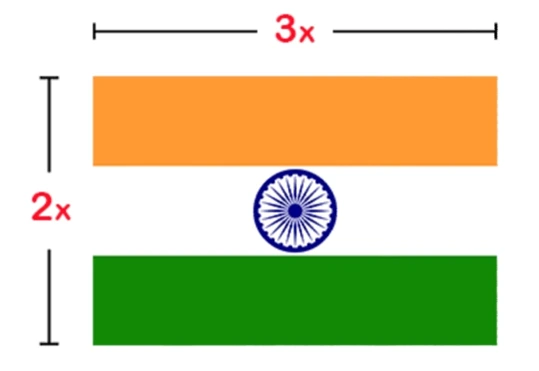
The Indian national flag consists of three colors arranged in three horizontal stripes of equal length. Starting from the top, there’s a saffron stripe, followed by a white stripe in the middle, and a green stripe at the bottom. In the middle of the white stripe, you can find the Ashok Chakra, which is navy blue and has 24 spokes, symbolizing the 24 hours in a day.
This flag was created by Pingali Venkayya. Each of the three colors on the flag has a special meaning. Saffron stands for sacrifice and courage, the white stripe represents purity, peace, and honesty, and the green stripe signifies faith and chivalry.
Tigers, scientifically known as Panthera Tigris, have a specific type called the Royal Bengal Tiger. In April 1973, India declared the Royal Bengal Tiger as its national animal. Nagpur is famous for being the “Tiger Capital” of India. Unfortunately, the population of these tigers has dwindled due to deforestation and illegal hunting, making them an endangered species. They are listed on the “Red List” by the International Union for the Conservation of Nature. To safeguard these magnificent creatures from poaching and hunting, the Government of India initiated “Project Tigers” in 1973.
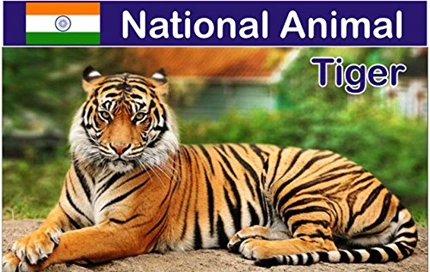
Also read,
The national emblem of India is a significant symbol known as the Lion Capital of Ashoka located in Sarnath. It was chosen as India’s national emblem on January 26, 1950. Below the emblem, there is an important motto written in Devnagri script, which is an integral part of India. This motto reads “Satyamev Jayate” in Devnagri script, which translates to “truth alone triumphs” in English.

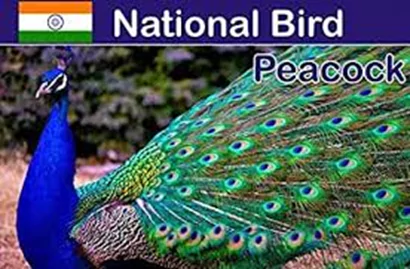
The Ganga River’s Dolphin, also called ‘Susu,’ was declared India’s National Aquatic Animal. It is an endangered species found in the Ganges, Brahmaputra, and their tributaries. It plays a crucial role in maintaining the health of the river ecosystems, making its conservation vital for India’s biodiversity.

The Indian elephant is the national heritage animal of India since 22 October 2010. India has the second-highest number of elephants in Asia that are used for tourism.

The Banyan Tree, designated as India’s National Tree, symbolizes immortality and eternal life due to its ever-expanding branches and roots. It is deeply rooted in Indian culture, often serving as a place for community gatherings and spiritual rituals. The tree is also known for its medicinal properties and plays a significant role in maintaining ecological balance by providing shelter to various species of birds and animals.

The national song of India is “Vande Mataram,” originally a poem written by Bankim Chandra Chatterjee. He included this poem in his Bengali novel “Anandamath” back in 1882. It was first sung by Rabindranath Tagore in 1896 during an Indian National Congress session. On January 24, 1950, India’s constituent assembly officially adopted this song as the national song of India.
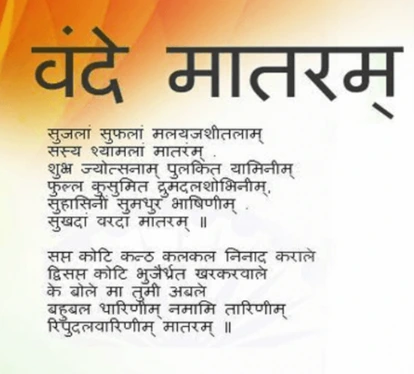
The national anthem of India is “Jana Gana Mana.” This song was initially written in Bengali by Rabindranath Tagore, and it’s a tribute to Bharata Bhagyo Bidhata, a divine entity. On January 24, 1950, India’s constituent assembly officially adopted “Bharoto Bhagyo Bidhata” as the national anthem of India.
The Saka Calendar was introduced by the Calendar Committee in 1957. The usage of the Saka Calendar was officially started on 1 Chaitra 1879 Saka Era, or 22 March 1957.
Months: As per National Calendar, the months names are Chaitra, Vaishakh, Jyaishtha, Ashadha, Shravana, Bhadrapad, Ashwin, Kartik, Agrahayana, Pausha, Magha, and Phalguna.
The national fruit of India is the mango, scientifically known as Mangifera Indica. Mangoes are typically in season during the summer in India. India is the birthplace of mangoes, and it’s home to over 100 different mango varieties. This delicious fruit is often called the “king of fruits.”

The national flower of India is the Lotus, scientifically known as Nelumbo Nucifera Gaertn. The Lotus holds a special place in India’s art and mythology, symbolizing purity and beauty. It’s considered an auspicious symbol of Indian culture and heritage.

The Indian Peacock (Pavo cristatus) proudly stands as India’s national bird. This stunning bird is native to the Indian subcontinent and symbolizes the harmony of India’s diverse colors and cultures. On February 1, 1963, the Government of India officially recognized the peacock as the national bird.

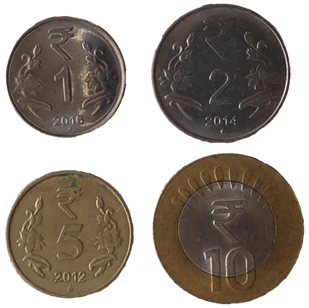
The national symbols of India encompass a diverse array of elements that hold deep cultural, historical, and spiritual significance. These symbols are a reflection of India’s rich heritage and values. They include the national flag, national emblem, national song, national bird, national animal, national tree, national fruit, national flower, national anthem, national game, national calendar, national vegetable, national aquatic animal, national heritage animal, national river, and national currency. Each of these symbols contributes to the tapestry of India’s identity, representing the country’s unity in diversity and its profound connection to its natural and cultural roots.
India has several natural national symbols that represent its unique flora and fauna. Here are some of them:
1. National Flower (Lotus): The lotus (Nelumbo nucifera) is the national flower of India. It symbolizes purity, beauty, and the promise of new beginnings. The lotus is culturally significant and often associated with various deities and religious ceremonies.
2. National Tree (Banyan Tree): The banyan tree (Ficus benghalensis) is the national tree of India. It is known for its extensive canopy, which provides shade and shelter. The banyan tree is revered in Hinduism and represents longevity and interconnectedness.
3. National River (Ganga/Ganges): The Ganges River, known as the Ganga, holds immense cultural and religious significance in India. It is considered one of the holiest rivers and is associated with spiritual cleansing. The government declared it as the national river to emphasize its importance for the nation’s well-being.
These natural national symbols reflect the rich biodiversity and spiritual heritage of India.
Ready to boost your UPSC 2025 preparation? Join PW’s UPSC online courses today!
| Related Links | |
|---|---|
| 10 Longest & Largest Rivers | Largest Volcanoes in the World |
| Sengol History | Top 10 Largest Countries |
| International Boundary Lines in the World | Major Sea Ports In India |
The 17 National Symbol of India are- Mango, Ganga, Royal Bengal Tiger, Indian Banyan, Tiranga, Jana Gana Mana, Saka Calendar, Vande Mataram, National Emblem of India, Ganges River Dolphin, Indian Peacock, Indian Rupee, King Cobra, Indian Elephant, Lotus, Pumpkin and National Pledge.
National symbols are special symbols that represent a country. India has 17 national symbols, and each symbol stands for something different. For example, the national animal, the Tiger, represents power, and the national bird, the Peacock, represents elegance. These symbols show the important qualities and values of the country to the world.
The National Symbols of India hold significant cultural, historical, and national importance. They represent the country's identity, values, and heritage, fostering a sense of pride and unity among its citizens.
There are 17 National Symbols of India.
The designer of the National Rupee symbol is Udaya Kumar Dharmalingam. He created the symbol, which is derived from the Devanagari consonant "र" (ra) and the Latin letter "R," representing the Indian currency, the Indian Rupee (INR). The symbol was adopted in 2010, signifying the nation's desire to reduce economic disparity and showcasing India's rich cultural heritage.
The National Flag of India is called Tiranga. Pingali Venkayya designed the national flag. Saffron stands for sacrifice and courage, the white stripe represents purity, peace, and honesty, and the green stripe signifies faith and chivalry.
The National Song of India is called "Vande Mataram'' written by Bankim Chandra Chattopadhyay. The first political occasion when Vande Mataram was sung was the 1896 session of the Indian National Congress. The song was a part of Bankimchandra's most famous novel Anand Math (1882).
There are 17 National Symbols of India namely Tiranga, Jana Gana Mana, Saka Calendar, Vande Mataram, National Emblem of India, Mango, Ganga, Royal Bengal Tiger, Indian Banyan, Ganges River Dolphin, Indian Peacock, Indian Rupee, King Cobra, Indian Elephant, Lotus, Pumpkin and National Pledge
National symbols are iconic representations of a country's identity, culture, history, and values. They play a significant role in fostering a sense of unity, patriotism, and national pride among the citizens.

<div class="new-fform">
</div>